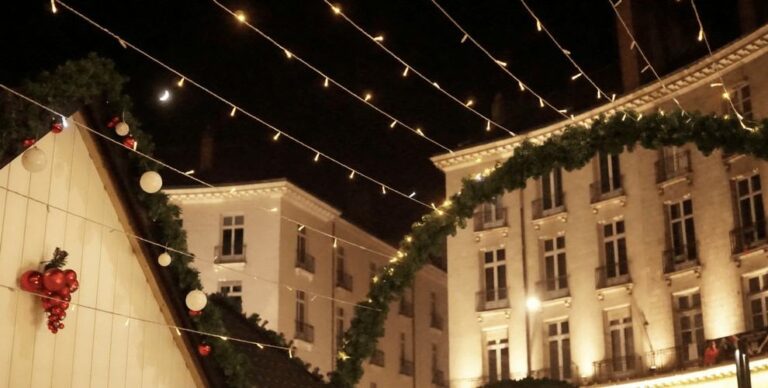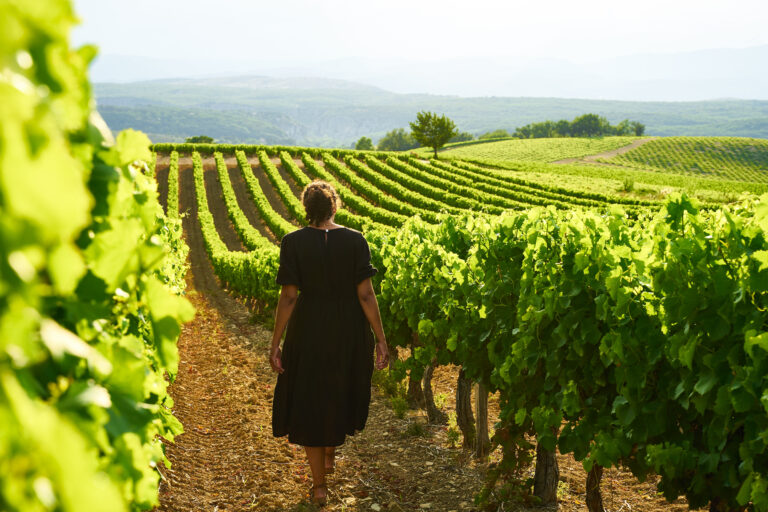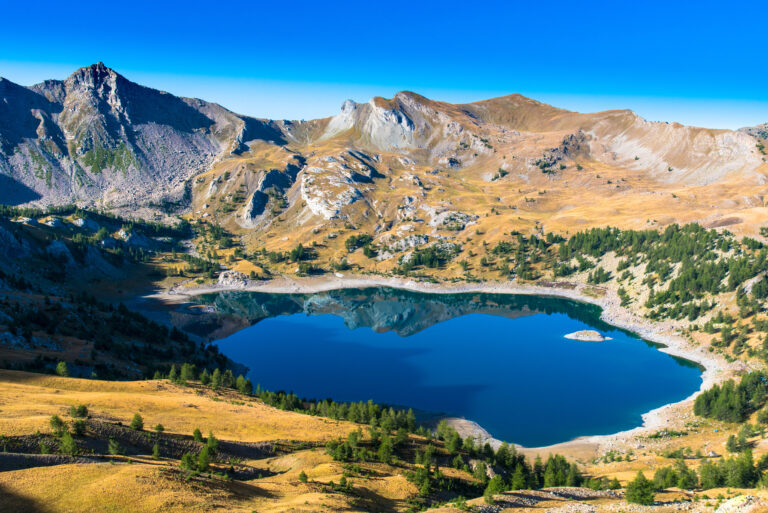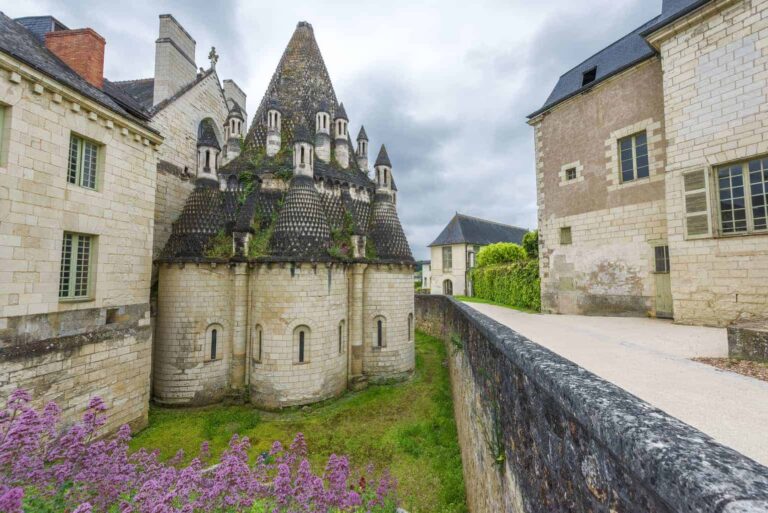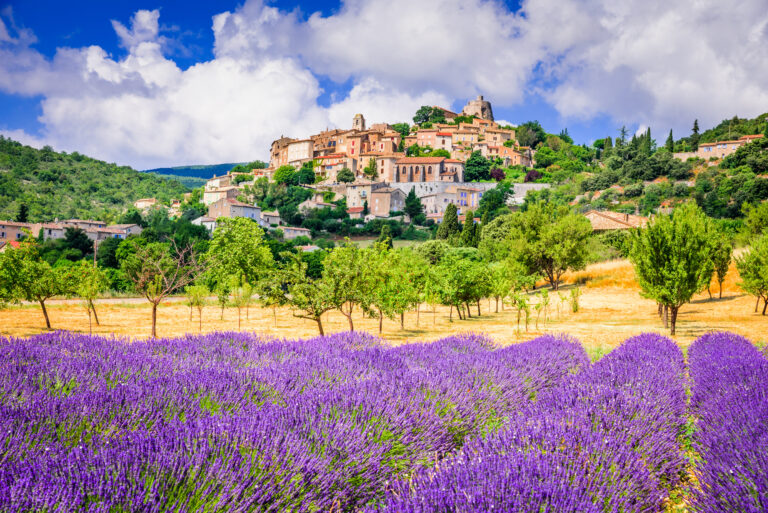Most Beautiful Castles in the Dordogne
The rich and varied Dordogne department of France may not be the country’s best-kept secret, with a whopping 3 million visitors touring the region each year. But when you visit, you’ll find there’s a kind of peaceful ambience with enough space for everyone to roam. It’s a rich tapestry of meandering rivers, ancient forests, enchanting medieval villages, and historic castles (some say 1,001 in total), each with a unique story to tell.
The landscapes are loved by outdoor enthusiasts – with hiking, cycling, canoeing and even wine tasting on offer. Local markets take place weekly, in sleepy, stone-clad villages, and quaint cafes and restaurants serve everything from black truffle-infused dishes to traditional Périgord walnut cake.
Below, we’ll transport you to the most beautiful castles in the Dordogne to delve into myths and legends, learn about local history and gain a glimpse of what to see in each area.
Chateau de Beynac
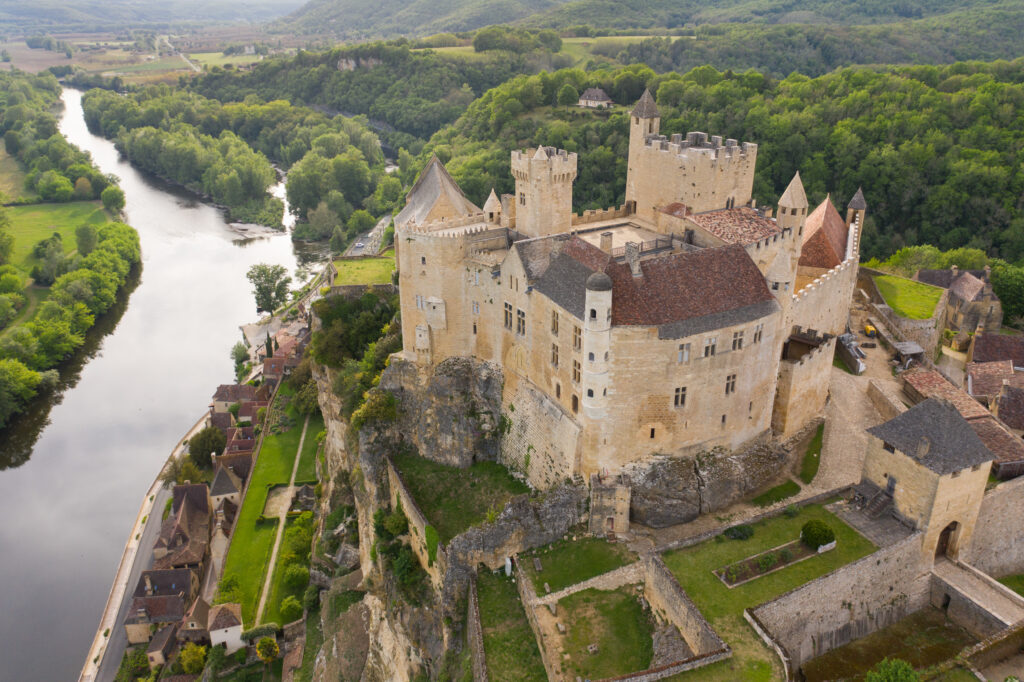
Sitting high upon a limestone cliff, strategically built to deter invaders, the 12th-century Château de Beynac could possibly be the most famous chateau in Dordogne France.
Flanked by ancient forests, the fortified castle boasts beautiful views across the valley and Dordogne River. Many travelling nobles stayed here during medieval times, including Eleanor of Aquitaine, Richard the Lionheart and several Beynac lords. During the Hundred Years War, the Beynac Castle became known as a strategic stronghold of France.
On a tour, step inside to discover well-preserved kitchens and imagine important decisions taking place in ornate stately rooms. Climb the tower for a superb view across the river and towards the pretty village of Beynac-et-Cazenac, or pop into the chapel to examine the frescoes. If you wish to explore the area with a guide, I recommend this combined boat trip and walking tour.
Chateau de Castelnaud-la-Chapelle
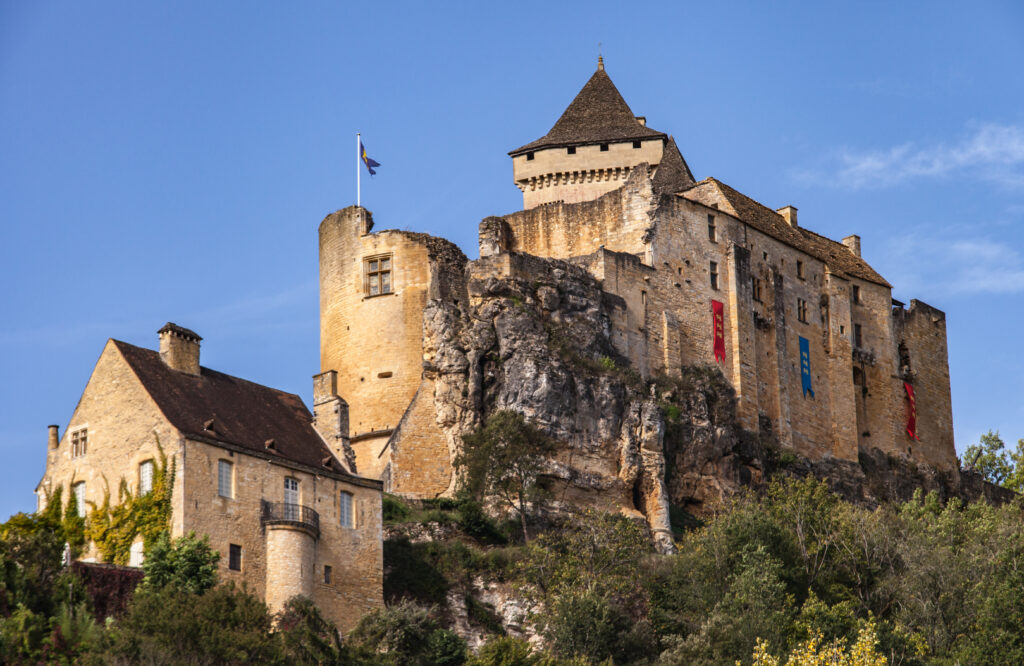
Across the river stands a great rival to Château de Beynac, a commanding fortress known as Château de Castelnaud – sharing the title of one of the best castles in Dordogne.
Just like its adversary, this castle was a stronghold of the four Périgord departments during medieval times. It has a storied history which can be discovered on a guided tour. Learn about how it was taken from a Cathar lord by Simon de Montfort during the Albigensian crusade. Discover how the château was rebuilt following a fire and how it came to be held by supporters of the English crown before being protected by a Huguenot captain during the Wars of Religion.
The fairytale castle has much to entertain day trippers, including interesting museums filled with armour and medieval weaponry. You can see blacksmith demonstrations or even dress up in medieval costumes for fun photographs. Drop by during the summer months to enjoy outdoor performances and evening shows as stars shine and moonlight reflects on the river below.
Chateau de Commarque
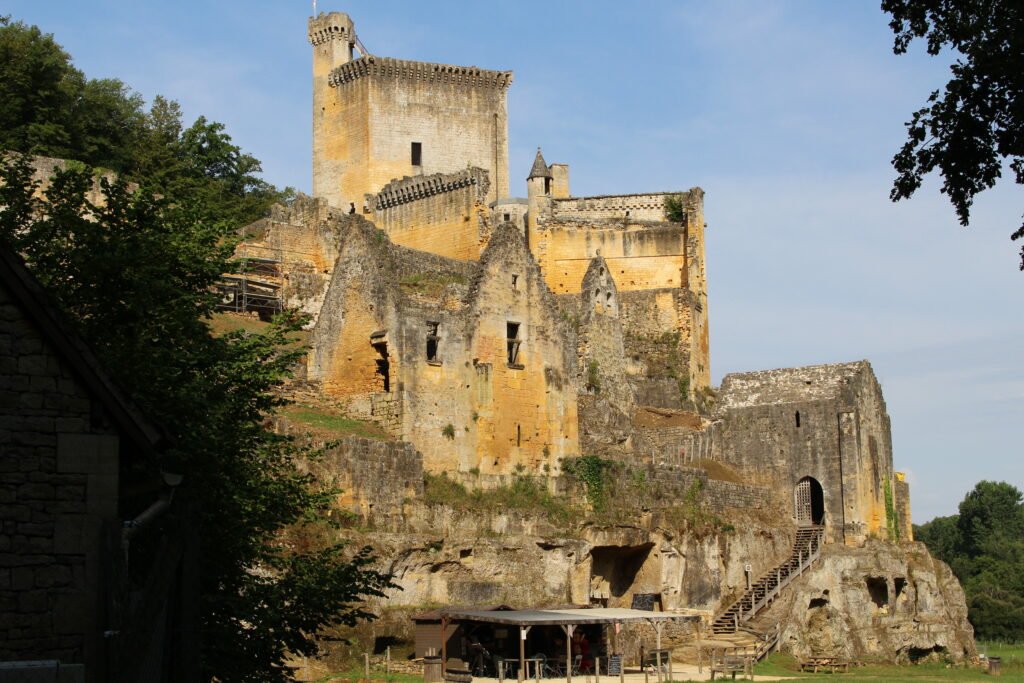
The 12th century Château de Commarque sits on a clifftop around 20 minutes northwest of Sarlat-la-Canéda. The original castle was once a simple wooden tower on a clifftop, constructed to protect the Benedictine Abbey. However, in the 14th century, it was procured by the Beynac family who began to extend the castle, replacing wood with local stone towers and a chapel.
The castle, like many others in the Dordogne valley, was commandeered by the English during the Hundred Years War before being abandoned and ultimately falling into ruin. It lay dormant for many years until the 1970s when it was purchased by Hubert de Commarque (hence the name).
Today, you can enjoy a tour of the château, observe exhibits, join in with medieval games, walk the nature trails and watch sound and light festivals throughout the year.
On a day visit, it’s also easy to spend time at the prehistoric caves and Château de Laussel nearby.
Chateau des Milandes
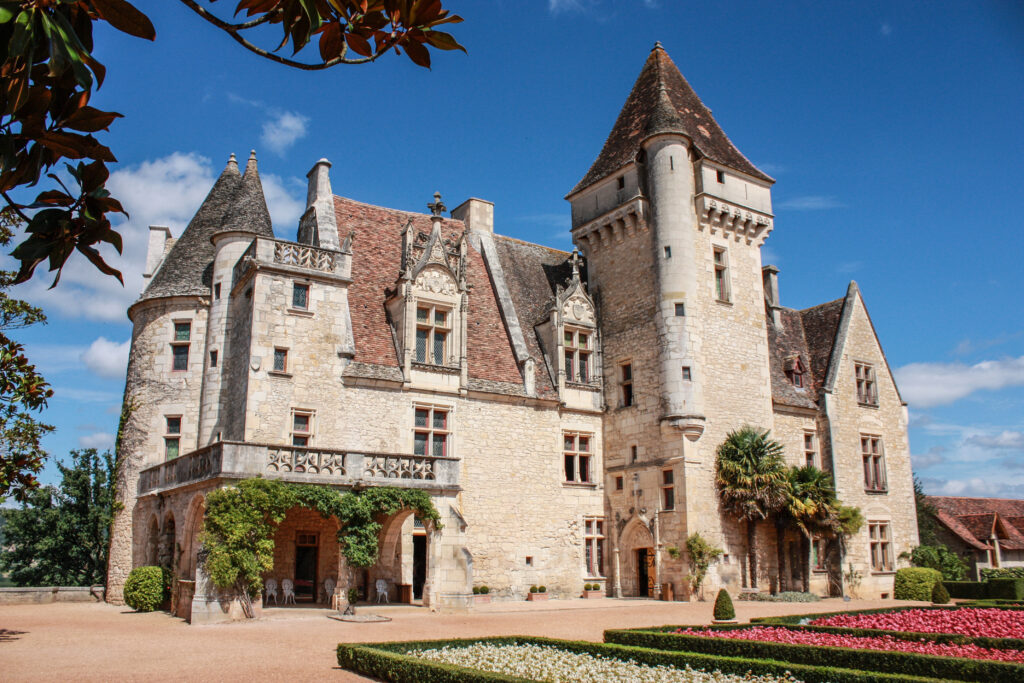
Château des Milandes emerges from emerald forests on the bank of the Dordogne River like Sleeping Beauty’s Disney castle. The impressive 15th-century landmark boasts a unique combination of Renaissance style and Gothic architecture and was originally built by a French aristocrat named Caumont for his wife.
It is perhaps one of the best-known Dordogne castles, as in the 1940’s it became the home of trailblazing activist and entertainer Josephine Baker. Before entering the château for a tour, stroll through the magnificent sculpted gardens, once cared for by the head gardener of Paris.
See a medieval Bird of Prey demonstration, take a fencing lesson to become a musketeer, or join a costumed storyteller to learn more about the château.
Step inside the castle to explore historic furnished rooms, admiring stained glass windows, antiques and ornate architecture, or visit the museum dedicated to Josephine Baker before sitting down for a delicious lunch in the onsite restaurant. Combine your day trip with a visit to Château de Castelnaud, a five-minute drive away and Château de Beynac across the river (you can even discover them on a kayaking journey!).
Chateau de Bridoire
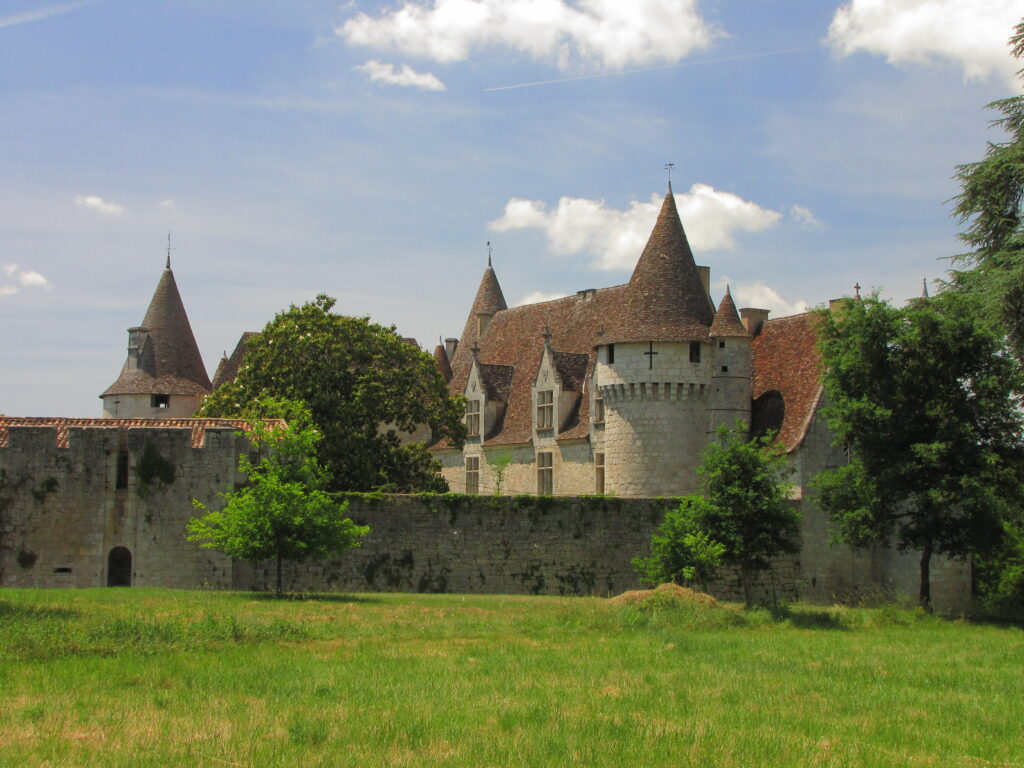
Just over an hour west of Château des Milandes, is the equally as impressive Château de Bridoire. The vast country estate near Ribagnac village is crafted from local stone, with pointed slate turrets that stand out against the agrarian landscape. The 12th century château was originally built as a defensive fortress, although throughout the years it has evolved into a beautiful Renaissance castle.
On a tour of the château, wander through grand halls and dining areas adorned with Gothic chandeliers. Step into bedrooms featuring wooden handcrafted four-poster beds and colourful wall tapestries. Learn about the battles that took place nearby and hear about the time when the future king of France came to dinner.
The expansive grounds are perfect for families to explore. Make a stop at the on-site picnic shop, before relaxing beneath a shady oak tree or challenging opponents to a game of chess on a giant board. Explore the labyrinth in the Mysterious Valley, before driving a little further up the road to discover Château de Monbazillac and Bergerac.
Chateau de Monbazillac
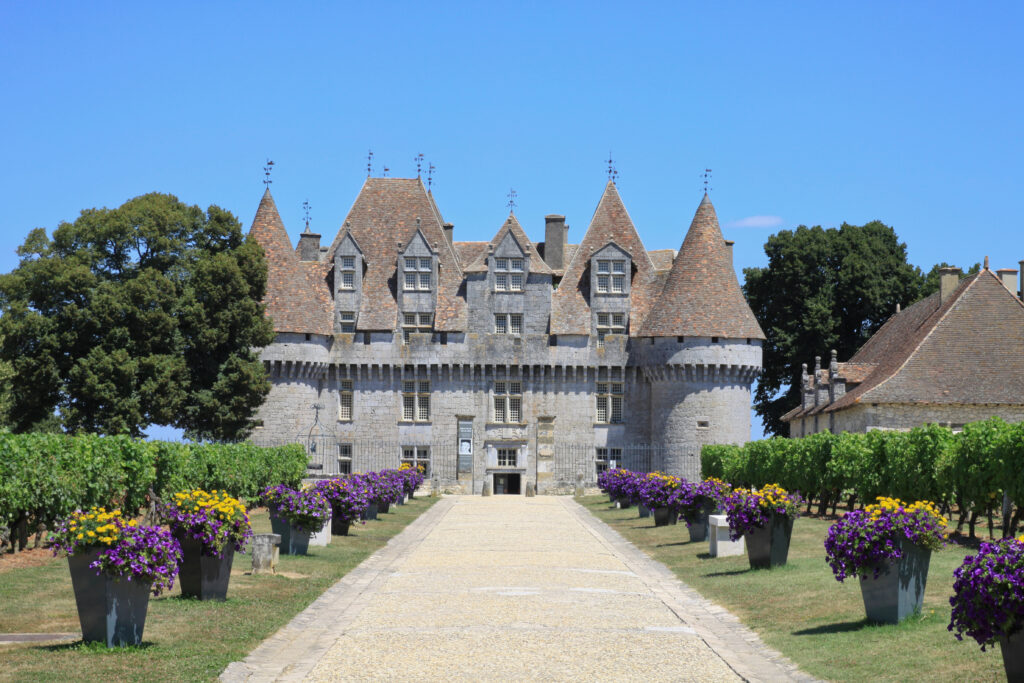
Approached via a long driveway with vineyards at either side, this historic chateau near Bergerac should be at the top of your Dordogne itinerary. Château de Monbazillac, built in 1550, has three floors to explore, with period features in reception rooms, and Italian-style baroque furniture which belonged to a famous French actor, Mounet-Sully.
See the bedroom of the Viscountess with its interesting wooden reliefs and be surprised by a hall decorated with sketches from a local Périgueux cartoonist. He is also known for designing the menu covers for the renowned Maxim’s restaurant in Paris.
Take a tour of the basement filled with bottles of sweet wine from the château vineyards, learn about the production process, and then sample a glass or two in the cave.
If you’re travelling for a special occasion head to the nearby La Tour des Vents restaurant. The one-Michelin star establishment with terrace dining has incredible views of the Dordogne Valley. Alternatively, blend your trip with a few hours in Eymet, a charming picture-postcard bastide town.
Chateau de Puymartin
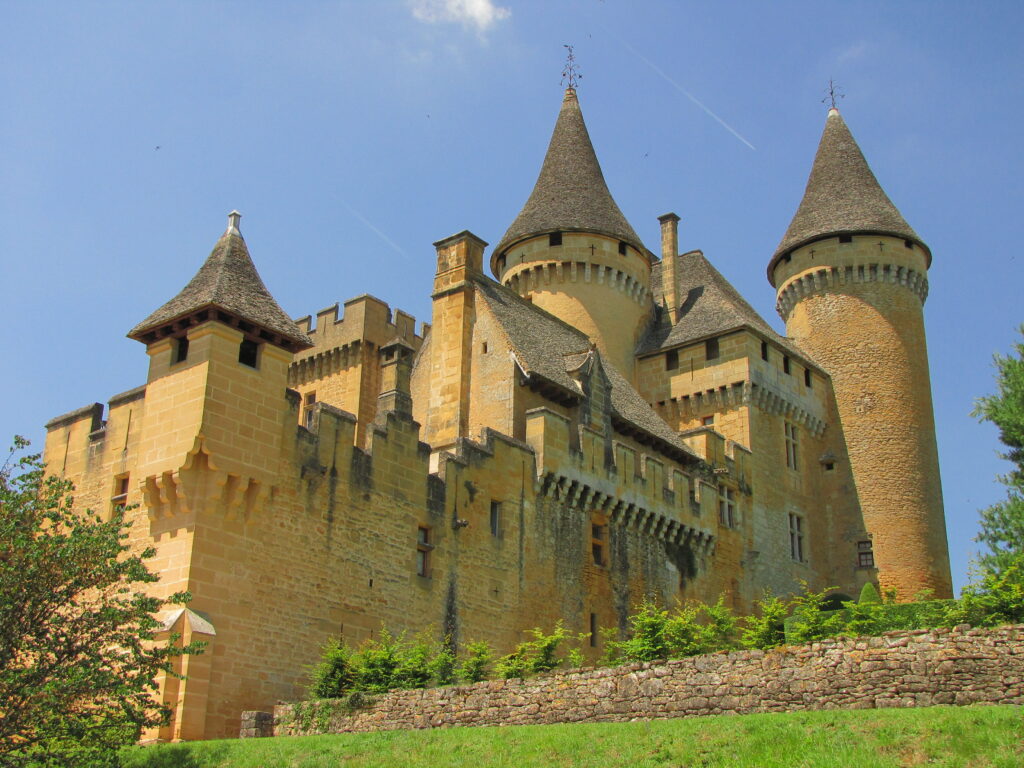
In the heart of Périgord Noir, in a forest near the pretty market town of Sarlat-la-Canéda, is the delightful, honey-coloured Château de Puymartin. As with many other castles in the area, it was originally constructed in the 13th century as a fortress, before undergoing extensive restorations. The grand, elegant castle was a known refuge for Protestant families during the Wars of Religion in France.
For those who like a spooky tale or two, it’s also said to be haunted by the White Lady. You can learn about all of these stories and more on a guided tour. Discover artworks and tapestries of the Great Hall, intricately furnished apartments and exquisitely painted ceilings. Step into the Saint-Louis courtyard and see the majestic Honor Room, reserved for the château’s most important guests.
Enjoy strolling in the beautiful gardens and sink beneath a chestnut tree imagining life here in centuries gone by. In summer and autumn, the castle hosts grand dinner events, mystery evenings and guided tours with breakfast included. Château de Puymartin is, in my opinion, one of the most fascinating castles in Dordogne.
Chateau et Jardins de Losse
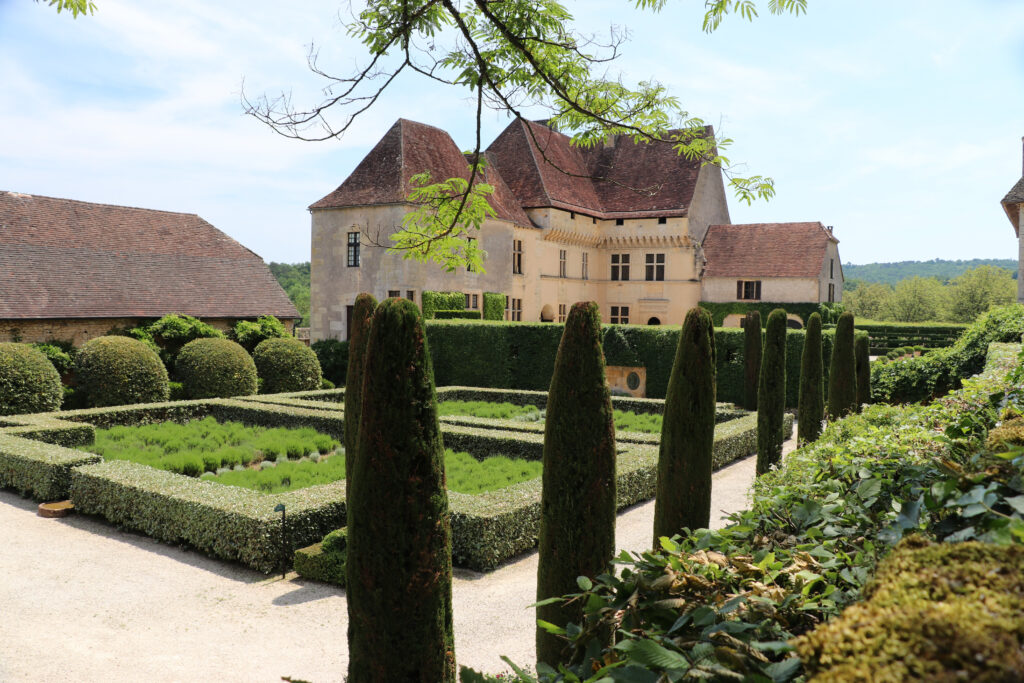
The beautiful blond limestone behemoth, Château de Losse is located around 30 minutes northwest of Sarlat-la-Canéda and around 15 minutes from the famous Lascaux Caves. The castle stands resplendent, this time not on the Dordogne river, but on the Vézère.
The castle’s owners – the Losse family – were from Flanders, and John II of Losse was said to be a revered soldier who was loyal to the crown. His roles included serving Catherine de Medici and tutoring Henri IV, before becoming the General Governor of the Limousin. A military man, John II built defences around Losse Château, and as you walk around today, you can still see where cannons once stood.
Take a tour inside to discover halls filled with woven tapestries from the Middle Ages, and marvel at ceremonial staircases and unusual antiques. And outside, while standing next to the river, reflect on the Renaissance masterpiece before taking a harmonious walk through award-winning gardens amid scented wisteria and pink roses.
Time your visit to arrive for the children’s treasure hunt, chivalry show days or book starry evening events with alfresco buffets and live jazz.
Chateau de Hautefort
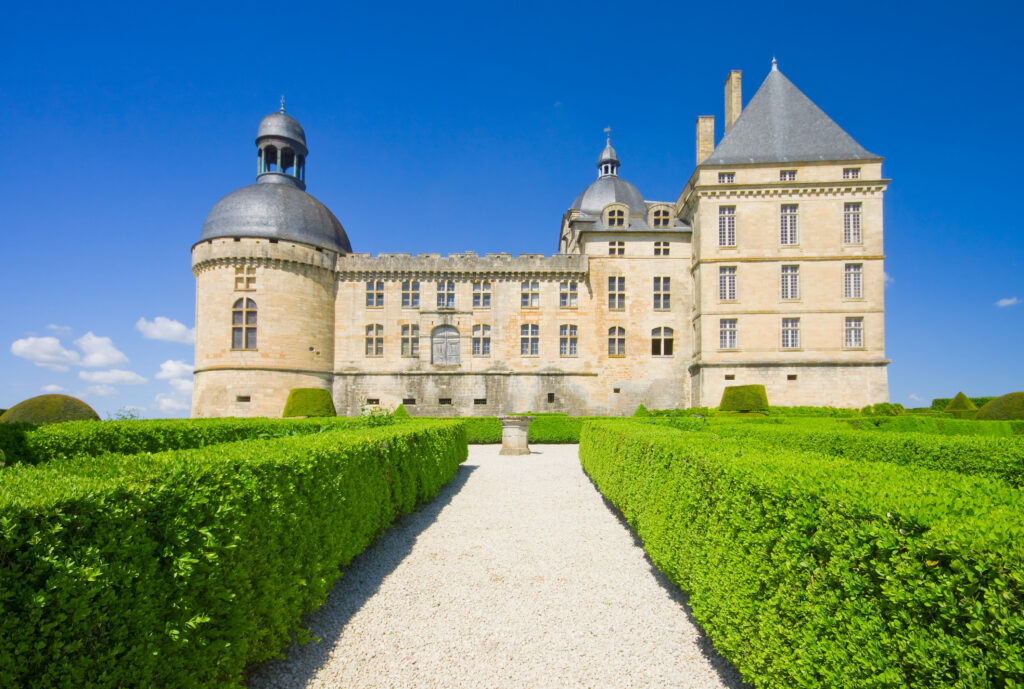
Originally a fortress from medieval times, Château de Hautefort on the edge of the village was reconstructed in the 17th century. It’s a charming residence (reminiscent of Loire Valley châteaux) with year-round events and spectacular, sculpted French gardens and parks. The noble Renaissance palace is steeped in history with elevated views across the Dordogne countryside.
Enter inside on a tour to see the decorative features and stately rooms punctuated with art and period furnishings, and explore over three hectares of sustainably managed, manicured gardens with topiary yew trees, vegetable gardens, floral displays and 10,000+ plants.
Chateau de Rocamadour
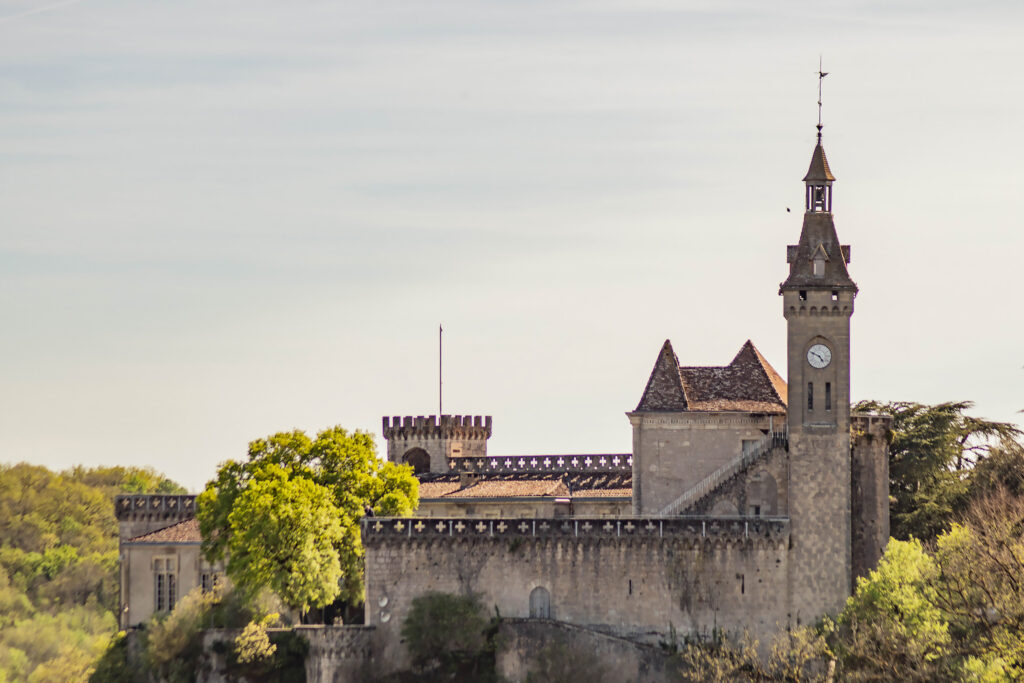
Rocamadour is one of the most intriguing places in France. Technically in the Lot department bordering the Dordogne region, the limestone cliffside village rises from the valley often shrouded in morning mist, reminding you of the fictional Rivendell from Lord of the Rings.
Rocamadour Château sits at the summit, accessed via a shady path leading to the Stations of the Cross, perched above spectacular UNESCO religious sanctuaries, basilicas and chapels etched into the cliffs.
The castle was once a former residence of the chaplains, built to protect the religious sites below. From the exterior, the views of the Alzou valley are breathtaking. While standing here you can almost sense the faint footsteps of pilgrims as they flock from miles around to seek sanctuary.
Remarkably, although impressive, Château de Rocamadour is not the only highlight of the village. Below you have the 12th-century chapel housing the crypt of St. Amadour, the famous pilgrim site Basilica Saint-Saveur and Chapel Notre-Dame, containing the statue of the revered Black Virgin. The streets leading to these historic structures are punctuated with art studios, quaint restaurants and shops selling everything from rosary beads to the village’s famous goat cheese.
If staying in the Dordogne, you can visit Rocamadour on a guided half-day tour from Sarlat-la-Canéda.
Chateau de Belcastel
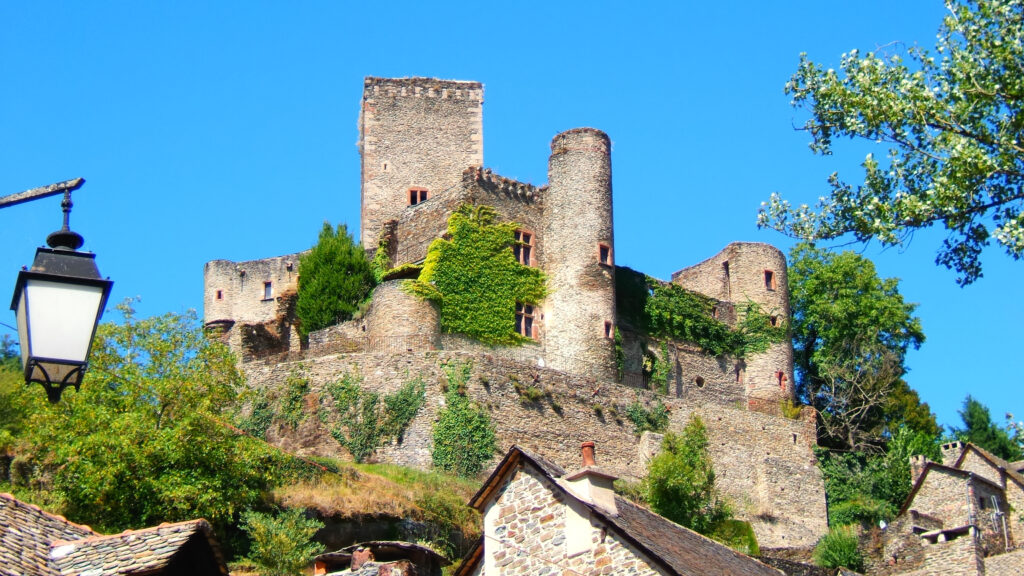
This magnificent clifftop castle dates back to the 9th century. Although also technically classed as being in the Lot department, it’s close enough to the Dordogne to deserve a mention. Château de Belcastel is perched atop a rocky outcrop with sweeping views of the valley, overlooking the confluence of the Dordogne below.
It’s a popular day trip from Figeac, Rodez or Albi. Feel like royalty as you step across the drawbridge over the moat, discover the château grounds and enter inside to see the restorations made by Fernand Pouillon, the former owner.
Today, the castle is owned by the owners of New York’s AFA Gallery who opened it to the public. The castle boasts several art galleries with abundant works and antiques inside, and it has become part of a route of 23 historic castles in the Aveyron region.
For a special occasion, book a suite and stay overnight to experience life in a medieval castle. Dine beneath twinkling lights as you overlook the valley. Is this the best chateau in Dordogne? You’ll have to stay to find out!
Chateau de Jumilhac
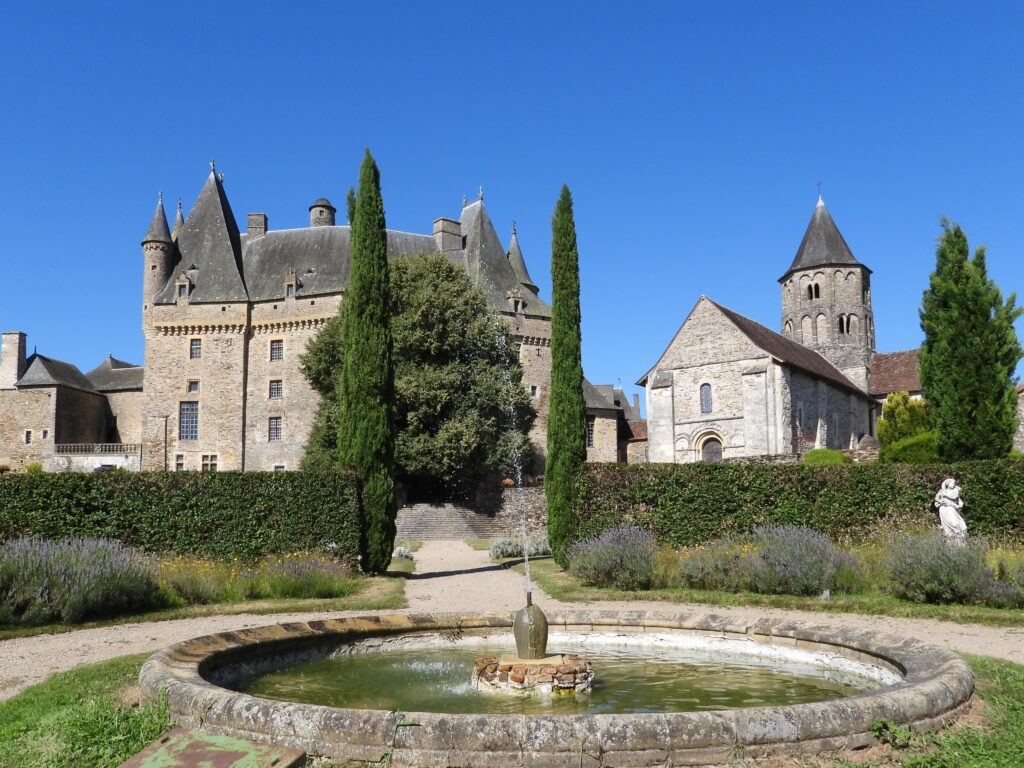
Nestled within Perigord-Limousin Regional Park is the resplendent Château de Jumilhac. The original medieval fortress was constructed in the Middle Ages, and in more recent years it has been transformed into a luxury residence.
To understand its rich history, you have to go back to when the castle was built. During this time, it was a stronghold coveted by both the French and English, before being destroyed by Richard the Lionheart. Throughout the years it was rebuilt and ruined again, until it was besieged during the Hundred Years War and seized again during the French Revolution.
Highlights of this grand residence include stately halls and rooms, handwoven tapestries and a library, all of which offer visitors a glimpse into the lives of French nobility. Don’t forget to check out the Salon des Thé and the garden’s mini planetarium and vegetable labyrinth before you leave!
A variety of activities and events take place year-round in the stunning gardens, including costumed guided tours, concerts and torchlight dinners with Baroque music (summer only).
There are, of course, many more beautiful Dordogne chateaux to discover. I’ve picked a selection of the most beautiful castles within easy access to larger French towns and cities, and close to each other so more than one can be visited in a day. If you do plan to visit, the Dordogne is rich with history, spectacular landscapes and charming villages, and it’s sure to capture your heart as it did mine.

